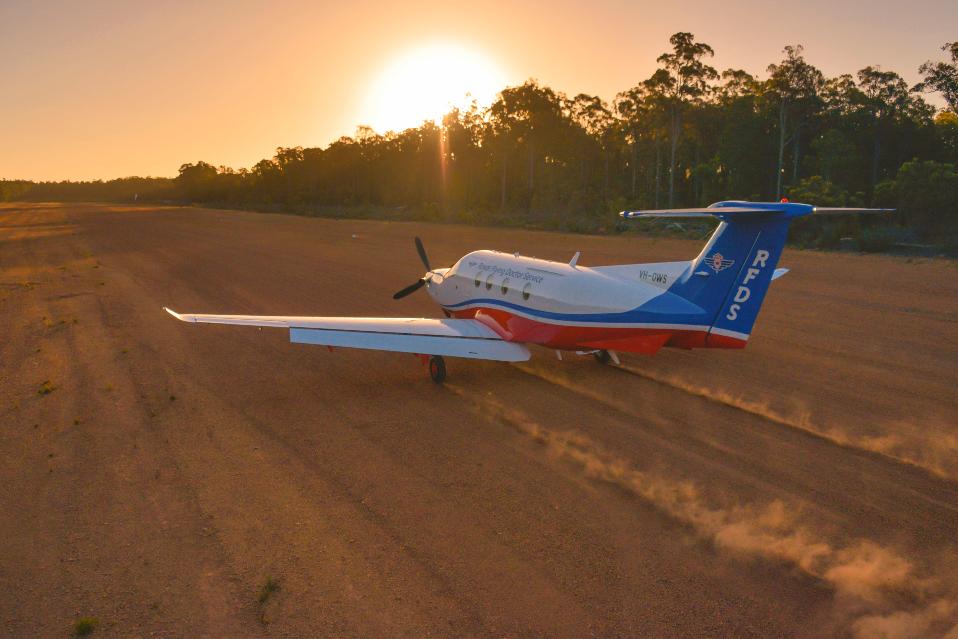December 1 - 31, 2024: Issue 637
Australian Government ensures future of Royal Flying Doctor Service + George Repin's 'Pedal Radio and the Royal Flying Doctor Service'
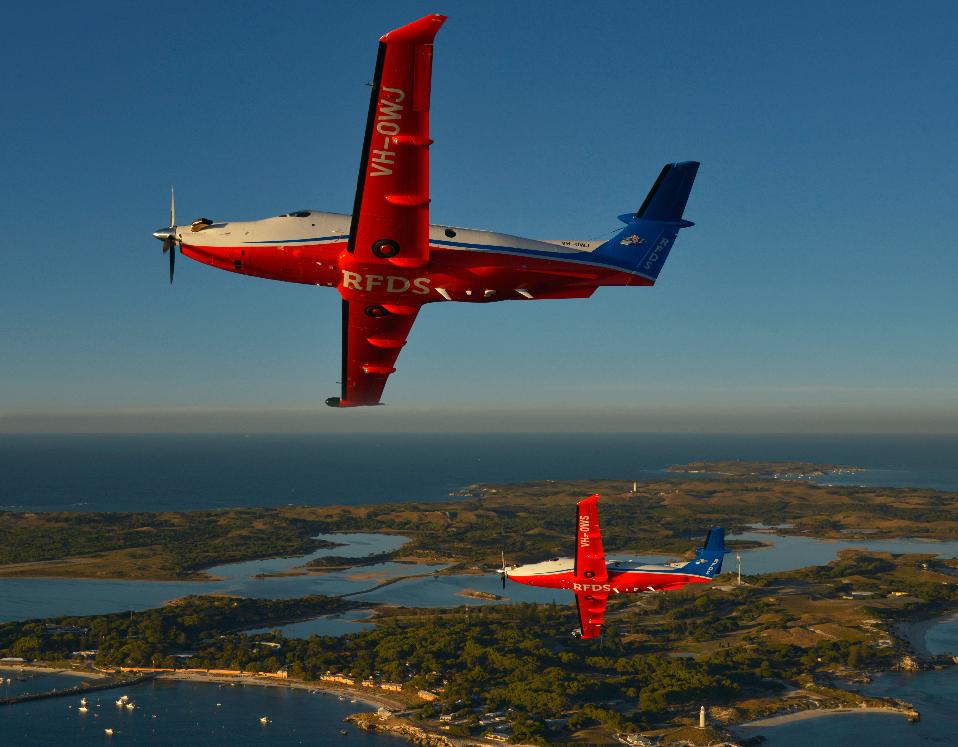
The Australian Government announced on December 10 it has secured the future of Australia’s iconic Royal Flying Doctor Service (RFDS) with a $74.8 million investment.
The three-year investment will enable the RFDS to deliver its primary care, mental health and dental services to more Australians across more remote communities.
Cementing this commitment to improve the health of people in rural and remote communities, the government and RFDS have also signed a long-term strategic partnership until 2031–32.
The RFDS’s role is critical to meeting the unique health challenges of remote and very remote Australia meaning even when emergency strikes in the bush, world class health care is not far away.
In 2023–24, the RFDS delivered more than 4,800 primary aeromedical evacuations, 3,800 primary health clinic visits, 2,600 mental health clinics, 36,000 dental services, 2,200 medical chests, and 40,000 remote telehealth consultations.
The RFDS 2023 Best for the Bush baseline report found that compared to people in major cities, people in remote and very remote areas are 2.8 times more likely to be hospitalised for reasons which are potentially preventable conditions.
People in very remote areas are 2.7 times more likely to die from potentially avoidable causes. People in the most remote areas are likely to die 14.3 years earlier, compared to those in major cities.
You can access the full Best for the Bush Rural and Remote Health Base Line 2023 research paper here.
You can read the RFDS Best for the Bush summary and recommendations here.
This critical additional investment follows the $1 billion government commitment to the RFDS over 10 years (2024–25 to 2031–32).
The Hon Mark Butler MP, Minister for Health and Aged Care, stated:
“Over nine decades, the RFDS has provided a lifeline for people who live, work and travel in rural, remote and very remote Australia.
“This additional investment from the Albanese Government ensures the RFDS can continue to provide world-class emergency healthcare services.
“The strategic agreement between the Commonwealth and the RFDS is part of our commitment to working together as genuine partners to improve health outcomes for people in the bush.
“Our government is committed to ensuring no-one is left behind in having access to health and medical care. This includes people in rural, remote and very remote areas whose sole emergency health provider can often be the RFDS."
The Royal Flying Doctor Service stated it is delighted to have signed a long-term Strategic Partnership with the Australian Government until 2031-32, cementing the shared commitment to together improve the health of people in rural and remote communities.
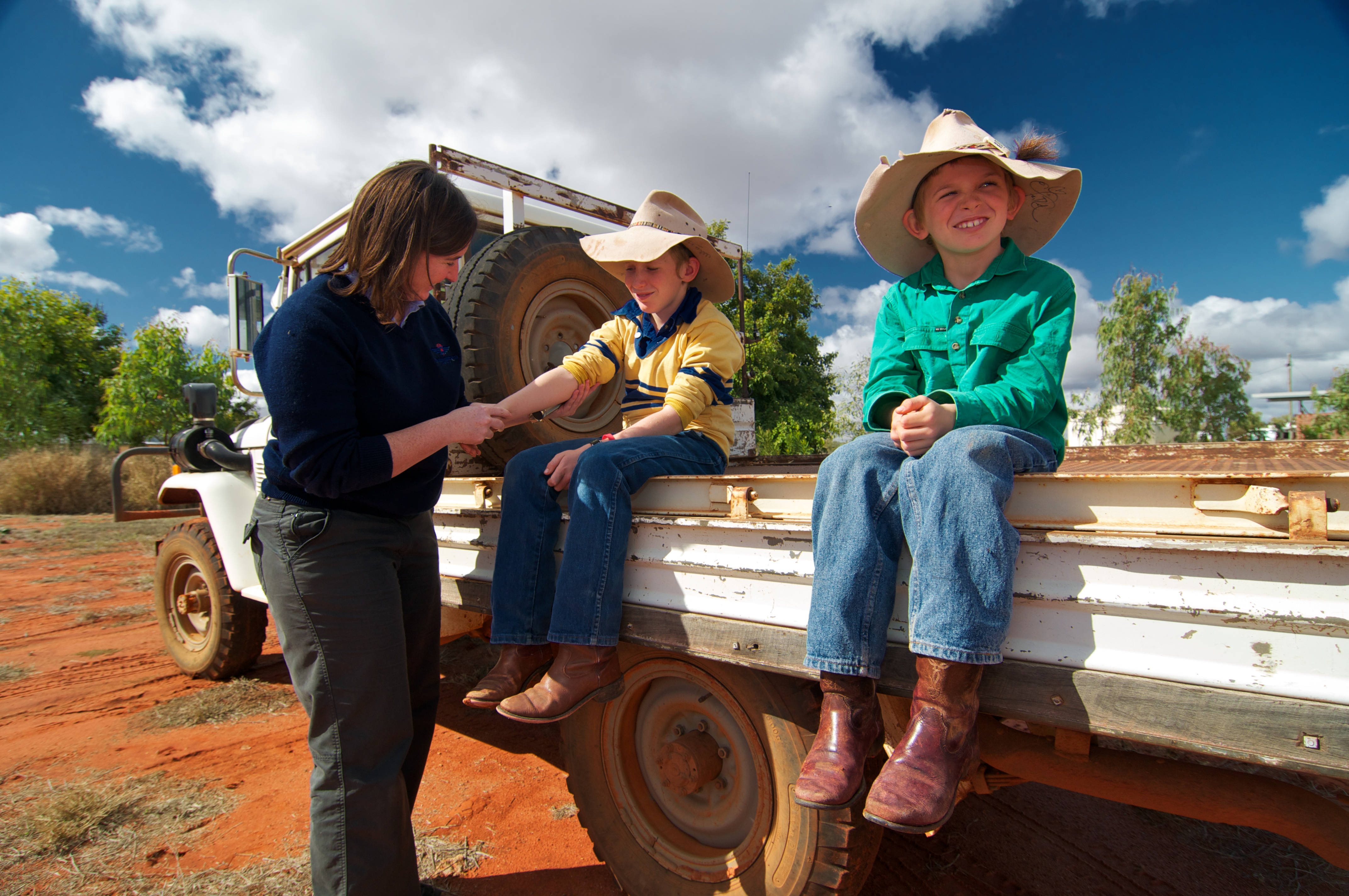
Primary Health Care with Outback Communities. Photo: RFDS
RFDS Founder - Reverend John Flynn
Reverend John Flynn witnessed the daily struggle of pioneers living in remote areas and had a vision to provide a 'mantle of safety' for the people of the bush.
He once said "If you start something worthwhile - nothing can stop it" and this simple truth is evidenced by the RFDS today.
Kimberley stockman Jimmy Darcy suffered massive internal injuries on 29 July 1917 when his horse fell in a cattle stampede. His death attracted national headlines and proved the impetus for Reverend John Flynn's vision for an outback aeromedical service.
In 1917, Reverend John Flynn received an inspirational letter from Lieutenant Clifford Peel. The young airman and war hero suggested the use of aviation to bring medical help to the Outback.
Peel had been a Victorian medical student and a keen reader of John Flynn’s “Northern Territory and Central Australia – a Call to the Church” which he regularly and repeatedly studied. According to his family, it inspired his interest in Flynn’s extraordinary work and set him thinking about the logistics of how Flynn would be able to provide help to people in need who were widely dispersed throughout Australia.
When the Australian Imperial Forces were searching for candidates for their newly-formed Australian Flying Corps in 1917, Peel volunteered and was selected for flying training at the central Flying School in Laverton, Victoria. Whilst at Laverton, the union of aviation and healthcare occurred in Peel’s mind.
Peel didn’t live to see how successful his idea was, tragically, only 13 months after he sent the letter and weeks before the end of WW1, 19 September 1918, his RE8 aircraft disappeared during a patrol in France. He died at just 24 years of age and never knew that his letter became a blueprint for the creation of the Flying Doctor Service.
Had he lived, there is no doubt he would have returned from the war to help Flynn build the Flying Doctor Service he had clearly foreseen. However Clifford peel had succeeded in conveying his brilliant idea to John Flynn, the man who was able to bring it to life.
For the next ten years, Flynn campaigned for an aerial medical service.
Today, the RFDS honour the legacy and innovation of Clifford Peel. Whilst Peel never had a chance to work for the RFDS directly, his legend, inspiration and forward thinking has inspired continued progress and innovation. The RFDS now have 71 aircraft operating from 23 bases across the country. The RFDS is now Australia’s 3rd largest airline and has over 350,000 patient contacts every year.
The Flying Doctor Service lacked the communication technology to deliver services efficiently. Alfred Traeger helped to hurdle this barrier with the invention of a pedal-operated generator to power a radio receiver. By 1929 people living in isolation were able to call on the Flying Doctor to assist them in an emergency.
By the late 1930's there were Sections of the RFDS operating in Victoria, Western Australia, South Australia, New South Wales, Northern Territory and of course Queensland.
In 1994 the Australian Council Office collaborated with the Reserve Bank of Australia on the design of the Australian twenty dollar note, to feature the face of the Reverend John Flynn. In 2019, the Reserve Bank has released a new twenty dollar note, once again featuring the origins of the Flying Doctor.
History insights courtesy RFDS.
Find out more at: www.flyingdoctor.org.au
Below runs an insight penned by Pittwater's George Repin AM during the second year of the news service, 2012. As with all of George's 'Reflections', there is a personal connection in what he shared. Dr George Repin, was Secretary General of the AMA, a position he held from 1973 until his retirement in 1987.
Pedal Radio and the Royal Flying Doctor Service
By George RepinIn 2008, on the Eightieth Anniversary of the establishment of the Royal Flying Doctor Service (RFDS) the initiative of two men was recalled. Their efforts combined medicine, aviation and radio to bring health care to those who live and work in remote areas of Australia.
The Reverend John Flynn (“Flynn of the Inland”) was deeply impressed by his experiences as an outback missionary of the Presbyterian Church. The problems of distance and communication resulted in many people dying because of lack of access to medical treatment. He and Lieutenant Clifford Peel, a young Victorian medical student with an interest in aviation, saw the potential of aircraft to offer hope to the injured and seriously ill in the outback. (Unfortunately Peel was killed flying over France just before the end of World War I).
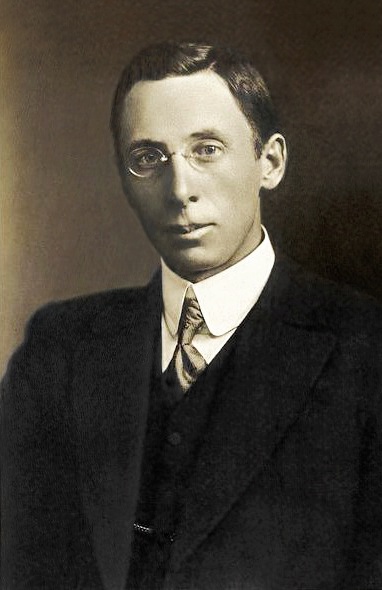
Portrait of John Flynn as a young man, circa 1900-1910.
Flynn set about raising funds to make his dream a reality but it was not until May 15, 1928 that a service was established in Cloncurry as a one year experiment.
Communication, however, posed serious difficulties. Flynn having heard of a young electrical engineer, Alfred Traeger, with a knowledge of radio, asked him to solve the problem by developing a cheap, efficient device to connect people in the outback to a central station. Tregear adapted a method used by German troops during World War I, powered by a set of bicycle pedals, which could generate just enough power to send messages by Morse code. The Traeger Pedal Radio was launched in 1929 at a then cost of 33 Pounds. This simple radio made it possible to call for a doctor or to receive medical instructions from as far away as 1500 Kms.
The RFDS and the Treager Radio went on to provide not only emergency medical aid but also a comprehensive health and community service to the people of the inland.
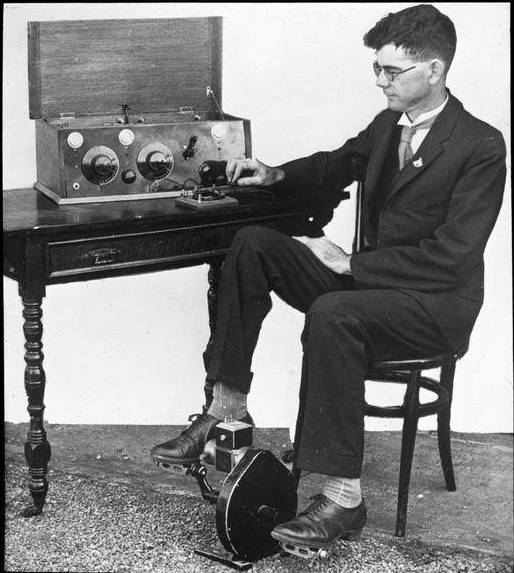
Above: Mr. Alf Traeger transmitting by a pedal-powered wireless, nla.pic-an24631139 by Flynn, John, circa 1928/1929. Courtesy National Library of Australia
By 1933 the Treager sets were extensively used. Treager soon overcame the problem of outback people having to use Morse code by developing a keyboard which enabled unskilled people to type a message in plain language and have it transmitted in Morse code. Eventually, however, communication by voice instead of code became a reality.
The radio network established by the RFDS led to great advances in education for children living in remote areas. In 1946 Miss Adelaide Miethke, a vice-president of the South Australian wing of the RFDS and a former inspector of girls’ schools, noticed that outback children were taught, and became adept in using, the RFDS radio service. She saw another way in which the network could be used.
In 1948 the Alice Springs RFDS base broadcast the first school lessons to outback children. A few years later, in 1951, the School of the Air was established using the Flying Doctor Service’s two-way radio system, giving isolated children access to lessons conducted by teachers, help with lessons coming by correspondence, and friendships and contacts in the outside world.
The dream of John Flynn - and Alfred Treager’s technical skills - laid the foundations for two outstanding services now available to the people of the “outback”.
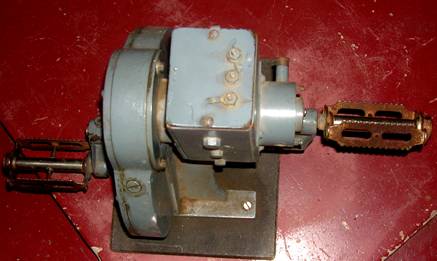
Pedal Radio Generator preserved at Adelaide House, Alice Springs. Photo: George Repin
When John Flynn died in 1951 his ashes were placed in a monument outside Alice Springs under a large boulder from the Devil’s Marbles. Treager is commemorated by a Sports Ground and a plaque in Alice Springs and a RFDS aeroplane in his name. Both men were awarded an OBE.
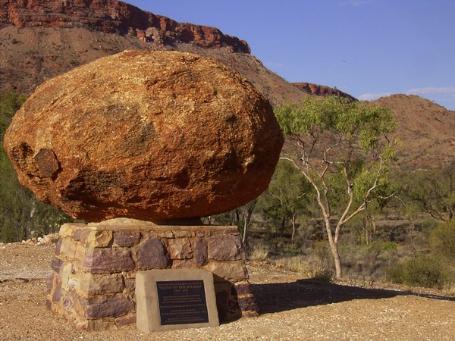
John Flynn Memorial. Photo: George Repin
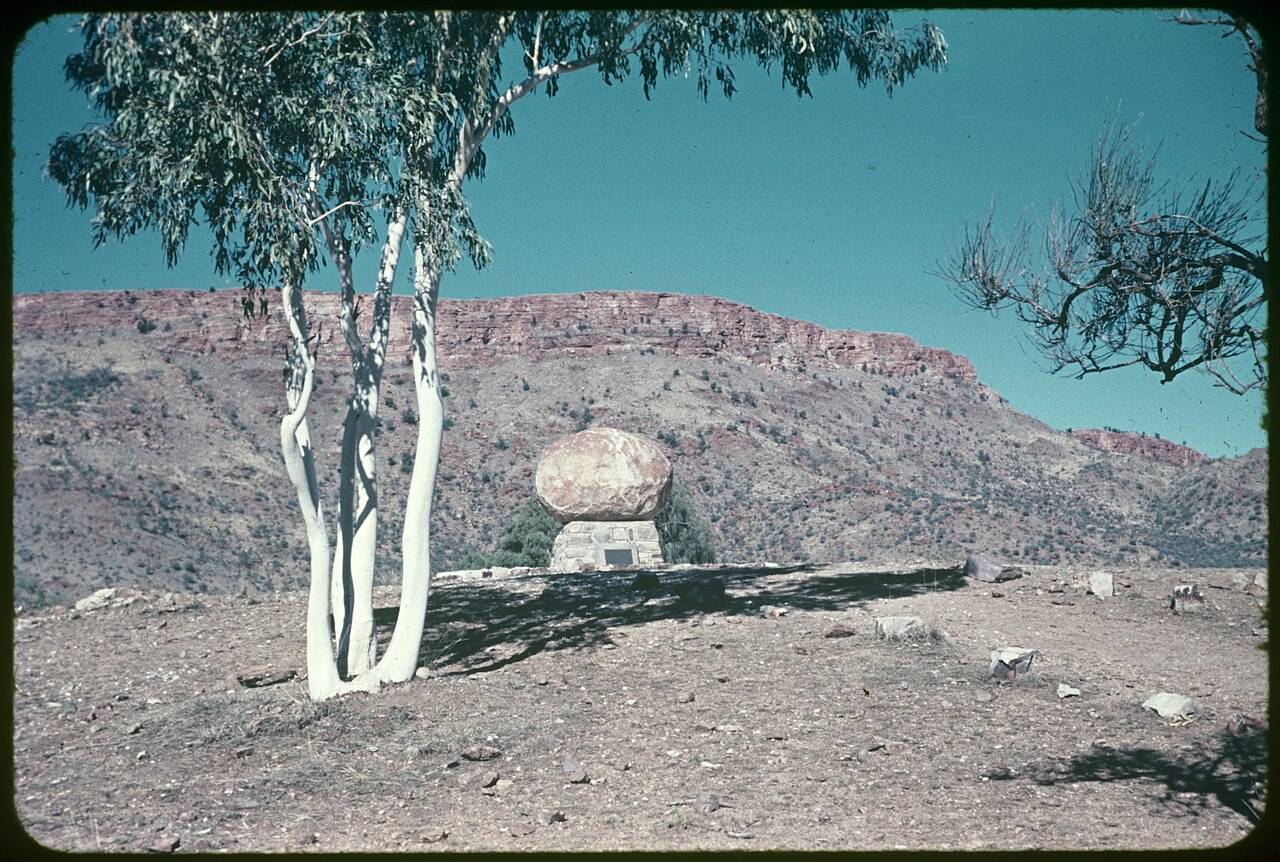
John Flynn's Grave in 1957 or 1958. Photo/slide: Anton Faymann
